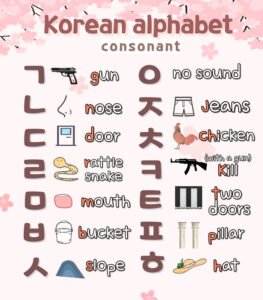나 보다 Grammar : I Guess…
Hello! Today, we’re going to learn about the -나 보다 grammar !
This grammar is used to express a guess or assumption about a state or adjective, based on something you noticed or experienced.
I’ll guide you through how to use this expression naturally with plenty of examples. Let’s get started! 🚀
Let’s grasp the concept of grammar
🌱How to form🌱
✅ -나 보다 is used for verbs in the present tense.
✅ -ㄴ/은가 보다 is used for adjectives in the present tense.
✅ Use past tense conjugation + -나 보다 for both action verbs and adjectives in the past tense.
✅ For the future tense, use -(으)ㄹ 건가 보다.
📌 Key meaning
“I guess…” / “It seems like…” / “Apparently…” (based on what I saw/heard/felt)
1. Adjective:
바쁘다 → 바쁜가 봐(요)
“He must be busy.” (You tried calling him, but he didn’t answer — based on that, you’re making a guess.)
2. Verb (present):
먹다 → 먹나 봐요
→ “I guess she’s eating.” (Maybe because you heard chewing sounds)
3. Verb (past):
갔어요 → 갔나 봐요
“Looks like he went.” (Maybe you saw an empty seat, based on what you experience)
4. 이다:
학생이다 → 학생인가 봐요
“I guess he’s a student.” (Maybe based on his backpack and uniform)
5. Verb/Adjective(future):
가다 → 갈 건가 봐요
“I guess he’s going to go.” (Maybe you saw him pack a bag)
We have another grammar point for making assumptions: -것 같아요.
So, what’s the difference between -것 같아요 and -나 봐요?
Let’s say you drink a cup of coffee and want to say, “I think this tastes bad.”
✅ 이거 맛없는 것 같아. – I think it tastes bad. (✔️ Correct – based on your own experience)
❌ 이거 맛없나 봐. – I guess it’s bad. (✖️ Not natural – you’re not guessing, you’ve tasted it yourself)
You would use -나 봐요 when you haven’t tasted it, but you’re making a guess based on what you see.
“You look around and see that no one is eating their food, so you say:
‘음식이 맛없나 봐.’ – ‘I guess the food isn’t good.’” (✔️ Correct – based on observation)
When you look at the sky and it looks like it’s drizzling, you would say:
비가 조금 오는 것 같아요
→ You see it directly — so you’re thinking “It seems like it’s raining a little.”비가 조금 오나 봐요
→ This can sound a bit awkward if you directly see the raindrops — because you’re not really guessing anymore.Instead, you’d use this when you can’t see the rain yourself, but you notice other people holding umbrellas, so you make a guess based on that.
→ “Ah, I guess it’s raining?” → 비가 오나 봐요.
Here’s another example:
1. 시험이 어려운가 봐요
→ “I guess the test is hard.”
🔹 You’re making a guess based on indirect evidence or what you’ve observed.
→ e.g. “Everyone looks stressed” or “Students are complaining” — you didn’t take the test yourself.
2. 시험이 어려운 것 같아요
→ “I think the test is hard.”
🔹 This can be based on either your own feeling, what you heard, or even what others say.
→ e.g. “I saw some questions” / “My friend said it was hard” / “I have a feeling it’s difficult.”
But in many casual, everyday situations, -나/은가 봐요 and -것 같아요 can often be used interchangeably, especially when you’re just making a light assumption or observation.
전화 안 받네. 바쁜가 보다.
→ He’s not picking up. I guess he’s busy.
전화 안 받네. 바쁜 것 같아.
→ He’s not picking up. I think he’s busy.
🔹 In this context, they both feel very natural and nearly identical — it’s a casual guess based on a small observation.
💡 So when do they feel different?
-나/은가 봐요 → Used when you guess based on what you saw or noticed.
It’s like saying, “I guess…” or “It must be…” based on indirect signs.(You’re drawing a conclusion from external signs)-것 같아요 → Used more broadly, including when you’re just sharing your opinion or feeling, even without clear signs.







